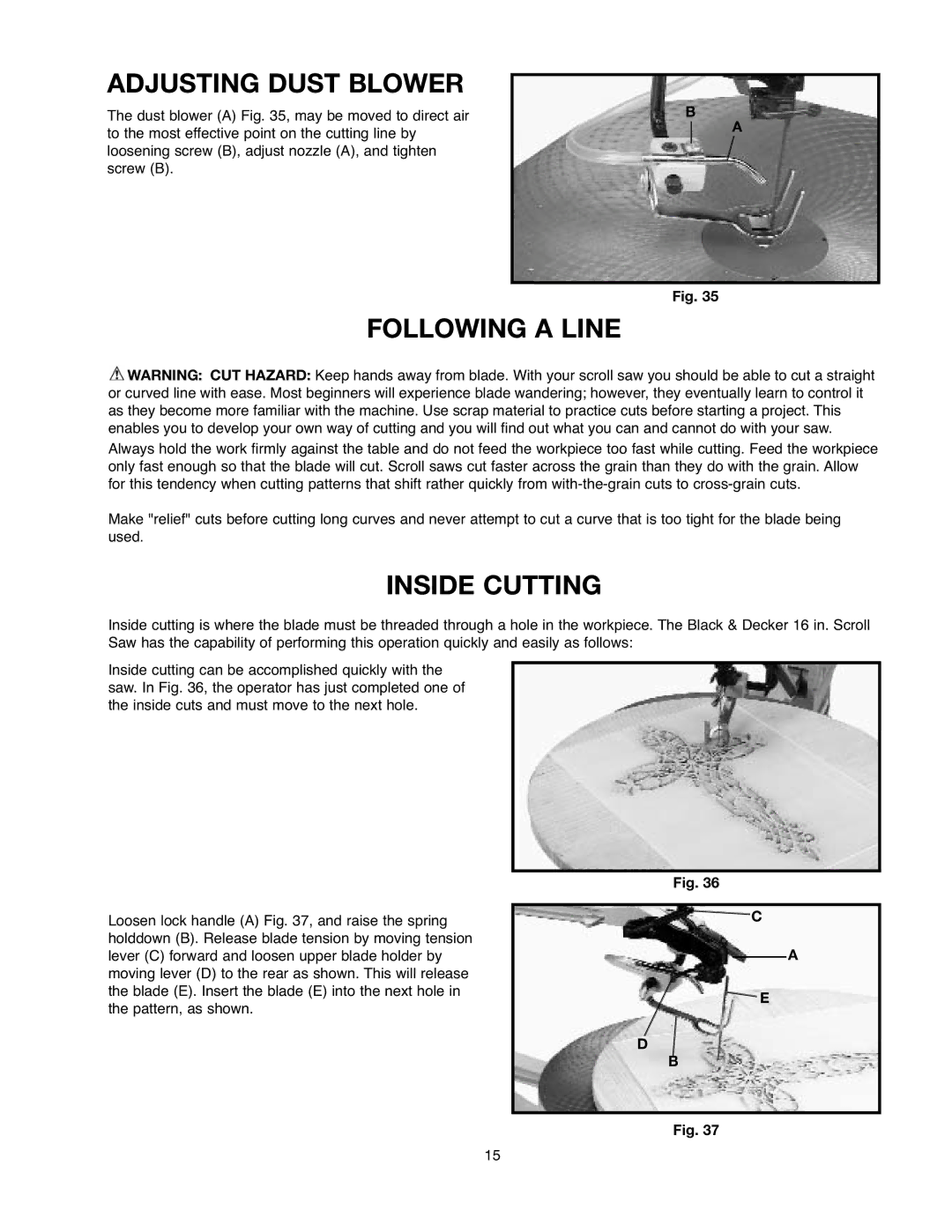
ADJUSTING DUST BLOWER
The dust blower (A) Fig. 35, may be moved to direct air to the most effective point on the cutting line by loosening screw (B), adjust nozzle (A), and tighten screw (B).
B
A
Fig. 35
FOLLOWING A LINE
![]() WARNING: CUT HAZARD: Keep hands away from blade. With your scroll saw you should be able to cut a straight or curved line with ease. Most beginners will experience blade wandering; however, they eventually learn to control it as they become more familiar with the machine. Use scrap material to practice cuts before starting a project. This enables you to develop your own way of cutting and you will find out what you can and cannot do with your saw. Always hold the work firmly against the table and do not feed the workpiece too fast while cutting. Feed the workpiece only fast enough so that the blade will cut. Scroll saws cut faster across the grain than they do with the grain. Allow for this tendency when cutting patterns that shift rather quickly from
WARNING: CUT HAZARD: Keep hands away from blade. With your scroll saw you should be able to cut a straight or curved line with ease. Most beginners will experience blade wandering; however, they eventually learn to control it as they become more familiar with the machine. Use scrap material to practice cuts before starting a project. This enables you to develop your own way of cutting and you will find out what you can and cannot do with your saw. Always hold the work firmly against the table and do not feed the workpiece too fast while cutting. Feed the workpiece only fast enough so that the blade will cut. Scroll saws cut faster across the grain than they do with the grain. Allow for this tendency when cutting patterns that shift rather quickly from
Make "relief" cuts before cutting long curves and never attempt to cut a curve that is too tight for the blade being used.
INSIDE CUTTING
Inside cutting is where the blade must be threaded through a hole in the workpiece. The Black & Decker 16 in. Scroll Saw has the capability of performing this operation quickly and easily as follows:
Inside cutting can be accomplished quickly with the saw. In Fig. 36, the operator has just completed one of the inside cuts and must move to the next hole.
Loosen lock handle (A) Fig. 37, and raise the spring holddown (B). Release blade tension by moving tension lever (C) forward and loosen upper blade holder by moving lever (D) to the rear as shown. This will release the blade (E). Insert the blade (E) into the next hole in the pattern, as shown.
Fig. 36
C
A
![]() E
E
D
B
Fig. 37
15
